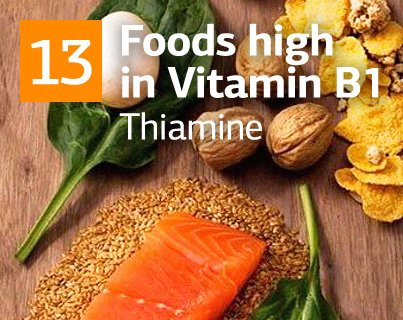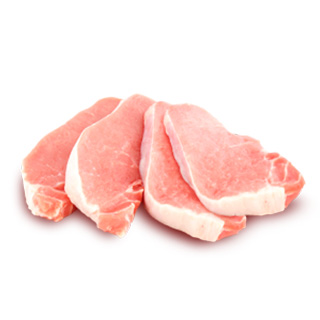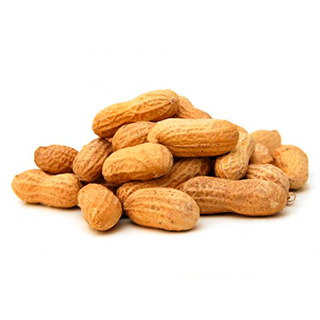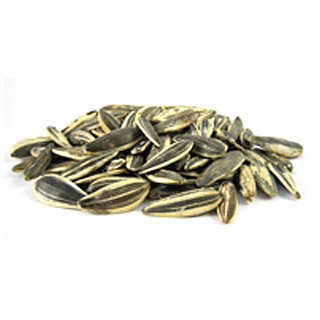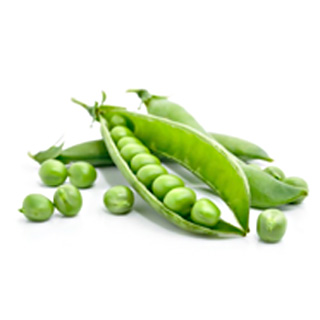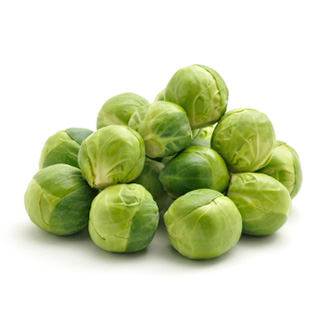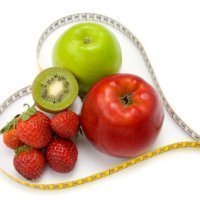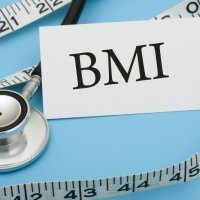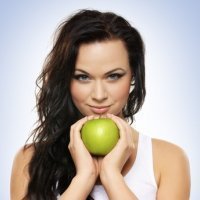What is Vitamin B1 and Top 13 Foods Richest with Vitamin B1 (Thiamine)
Do you want to be smart, intelligent and positive? Vitamin B1 is the key to your healthy and non-stressful life. Vitamin B1, or thiamin, is also called the vitamin of optimism. It provides our nervous system with energy for work and stimulates mental development. People, who consume lots of food with thiamin, are always in a good mood and can gain new knowledge much easier. Vitamin B1 also protects body from negative influence of smoking and drinking alcoholic beverages. It reduces ageing processes. But the main function of thiamin is to support our body in the process of energy production. It is a critical nutrient for carbohydrates breakdown. Vitamin B1 is also essential for our beauty. It increases nutrients’ circulation in our body and gives our skin healthy and smooth tone.
Vitamin B1 cannot be stored in our body. It can only be consumed with food or synthesized in our bowel. Luckily for us, almost every type of food we eat can be considered as a good source of thiamin. However, this vitamin is very easily destroyed by our modern cooking methods. All kinds of thermal conditioning drastically reduce amount of vitamin B1 in any product. Traditional cooking on a stove or microwaving destroys from 20% to 50% of the vitamin, and grilling is even worse. So, if you want to avoid vitamin B1 deficiency, try to eat less processed food, or include to your daily meals some portions of raw products.
Interaction Of Vitamin B1 With Other Nutrients
Vitamin B1, as a part of the whole B complex, is responsible for supplying our cells with energy. It is very important to consume all vitamins from B complex, because lack of one negatively affects the whole body. For instance, if you do not have enough of vitamin B9 and B12 in your diet, vitamin B1 will be absorbed by your body much slower. It can lead to poor metabolism. As a result, you will experience lack of energy, irritability and nervousness.
Deficiency Of Vitamin B1
It is a very sad fact to admit, but most of us do not consume even half of the daily vitamin B1 need. The food we eat is processed and the vitamins in it are prone to destruction. Elderly people form a special group of risk, because their bodies are not able to absorb thiamin so effectively. Vitamin B1 deficiency can be easily recognized by the following symptoms: impatience, sleep disorder, memory loss, poor appetite, sickliness, weight loss, breathlessness.
In case of long-term thiamin deficiency a person can experience nerve, brain and heart diseases.
Dietary Toxicity Of Vitamin B1
There is no research made on potential vitamin B1 dietary toxicity. In case our body receives overtop amount of thiamin, it simply gets rid of the excesses by urinating them.
Foods High In Vitamin B1
1. Pork
| Vitamin B1 in Pork, Fresh, Loin, Whole, Separable Lean Only | |
| 100 g | 1 lb (454 g) |
| 0.99 mg (99% DV) |
4.49 mg (449% DV) |
If you eat a piece of lean pork, you will consume almost twice as much of vitamin B1 as you need per day. However, pay attention to the meat. It has to be with no fats. You can even grill it. Pork is so high in thiamin that hot temperature cannot destroy much of it. It is also very high in protein, so you definitely need to have it in your menu few times a week.
2. Fish
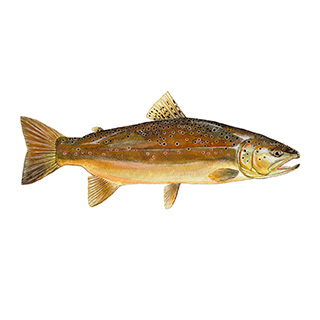 Types of Fish Rich in Vitamin В1 (100g):
Types of Fish Rich in Vitamin В1 (100g):
| Vitamin B1 in Trout, Mixed Species | |
| 100 g | 1 fillet (79 g) |
| 0.35 mg (35% DV) |
0.28 mg (28% DV) |
Fish has always been a good source of vitamins, especially because there are ways you can eat it low processed (salted) and no processed (raw). Who knows, maybe, sushi with raw salmon is one of the reasons why Japanese are such long-livers? The most high in vitamin B1 is trout. 100g of this fish will supply your body with 1/3 of your daily vitamin B1 need. A little less of thiamin you can get from salmon, tuna, shad and mackerel. I am not telling you to eat only raw fish. It can be healthy and tasty regardless the way you cook it. Simply make sure you include it to your meals at least three times a week.
3. Nuts
| Vitamin B1 in Peanuts, All Types | |
| 100 g | 1 cup (146 g) |
| 0.64 mg (64% DV) |
0.93 mg (93% DV) |
Nuts are even higher in vitamin B1 than fish. But again, you should eat raw nuts, not the fried ones. Try to include peanuts, pistachio, Brazil nuts, pecans, and cashews to your daily menu. They are great as a quick and easy snack between the meals. Nuts are also tasty in salads and desserts. They can spice up any meal.
4. Sunflower Seeds
| Vitamin B1 in Seeds, Sunflower Seed Kernels, Dried | |
| 100 g | 1 cup, with hulls, edible yield (46 g) |
| 1.48 mg (148% DV) |
0.68 mg (68% DV) |
The next food that can help your body to get lots of vitamin B1 is sunflower seeds. In order to get your daily thiamin dose you would have to eat 90g of these seeds. However, nutritionists do not recommend consuming large amounts of sunflower seeds, because they are also very high in fats. But you can incorporate them into your meal in a form of some additives to salads or main courses.
5. Wholemeal Bread
 Types of Whole Bread Rich in Vitamin В1 (100g):
Types of Whole Bread Rich in Vitamin В1 (100g):
| Vitamin B1 in Bread, Whole-wheat, Commercially Prepared | |
| 100 g | 1 slice (28 g) |
| 0.35 mg (35% DV) |
0.1 mg (10% DV) |
One more source of vitamin B1 is bread. Not all the bread, but only the one made of whole-wheat flour. Whole-wheat flour preserves all the natural vitamins, when the standard wheat flour, which we usually buy at the store and use for backing and making pasta, is mostly artificially enriched with nutrients.
6. Green Peas
| Vitamin B1 in Peas, Green | |
| 100 g | 1 cup (145 g) |
| 0.27 mg (27% DV) |
0.39 mg (39% DV) |
Green peas make super healthy food for our body. Besides thiamin, they contain the whole bunch of other vitamins of B complex (B6, B3, B2), as well as vitamins C and K. As any other vegetable, peas are best to be consumed raw. Green peas are tasty in salads or mashed into Pesto. You should cook them only at low heat and for a minimum amount of time. Eat them like a side dish or in soups.
7. Asparagus
| Vitamin B1 in Asparagus | |
| 100 g | 1 spear, medium (5 1/4 to 7 inch long) (16 g) |
| 0.14 mg (14% DV) |
0.02 mg (2% DV) |
The next source of vitamin B1 in our list is a well-known asparagus. Along with thiamin, it can provide body with vitamins A, E, C and manganese. It is especially good in spring, when there are not many fresh vegetables to choose from. The yummy asparagus is one of the first to appear at farmers’ markets. I, personally, love it fried, but the healthiest is the steamed one.
8. Brussels Sprouts
| Vitamin B1 in Brussels Sprouts | |
| 100 g | 1 sprout (19 g) |
| 0.14 mg (14% DV) |
0.03 mg (3% DV) |
Brussels sprouts are also commonly known as a very nutritional food. Indeed it is. Vitamins K, C, B1, B2, B3 and many others are consumed by our body every time we eat Brussels sprouts. I know, there are some people who do not really like this veggie, but it is probably because they did not taste roasted Brussels sprouts with spices. You can make them with garlic and a bit of lemon juice. Trust me, you will absolutely love them!
9. Cabbage
| Vitamin B1 in Cabbage | |
| 100 g | 1 head, medium (about 5 3/4 inch dia) (908 g) |
| 0.06 mg (6% DV) |
0.54 mg (54% DV) |
Our next choice of food high in vitamin B1 is cabbage. In addition to its nutritional benefits, eating it can help your body to decrease cholesterol level. We are used to traditional cabbage salads, but this vegetable can be cooked in so many other ways. It can be roasted, staffed with rice and other veggies, boiled in soups and even baked in pancakes. My personal favorite is delicious cabbage salad with chicken.
10. Oatmeal
| Vitamin B1 in Cereals, Oats, Instant, Fortified, Plain, Dry | |
| 100 g | 1 packet (28 g) |
| 0.45 mg (45% DV) |
0.13 mg (13% DV) |
Oats is a great meal to start a busy and productive day. They provide your body with a lot of energy, thiamin, zinc and protein. Combined with some fruits, they make a perfectly healthy breakfast. Oatmeal cookies are a nutritious and yummy snack for the afternoon, and cinnamon oatmeal waffles I can eat all day long. For a holiday event you may try to spice things up with apple and pear oatmeal crisp or oat muffins.
11. Oranges
 Types of Oranges Rich in Vitamin В1 (100g):
Types of Oranges Rich in Vitamin В1 (100g):
| Vitamin B1 in Oranges, All Commercial Varieties | |
| 100 g | 1 fruit (2-5/8 inch dia) (131 g) |
| 0.09 mg (9% DV) |
0.12 mg (12% DV) |
Oranges also make a good source of thiamin. As you probably know, they are high in vitamin C and fiber. And the best thing about them is that you do not have to eat the whole fruit, because, obviously, if you want to get your vitamin B1 daily dose only from oranges, you will have to eat more than 10, but you can drink orange juice and gain most of the needed nutrients out of it. That is why fresh-squeezed orange juice is considered to be a basic part of a healthy breakfast. It is definitely better than a cup of coffee.
